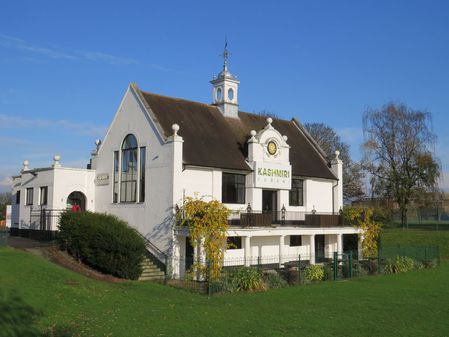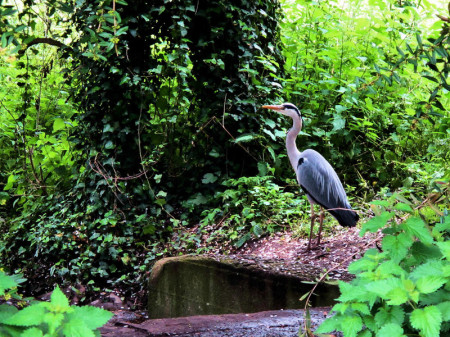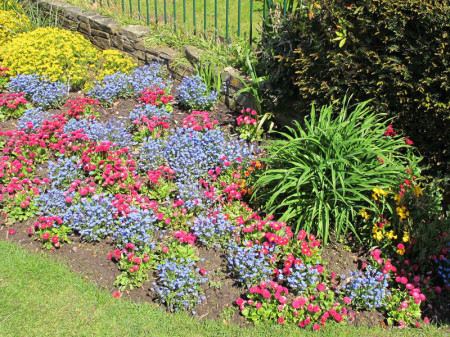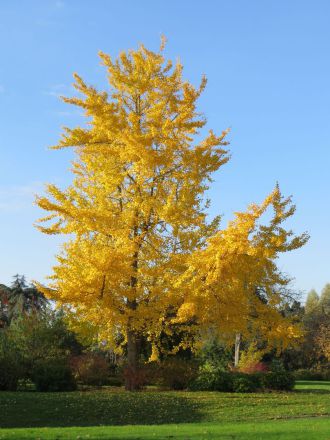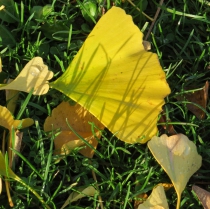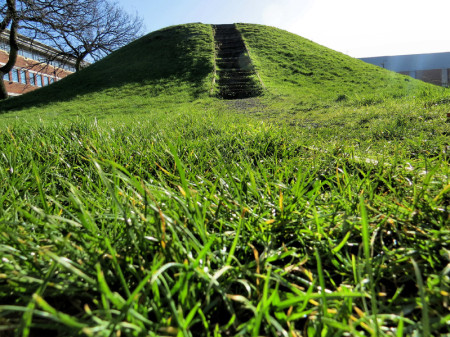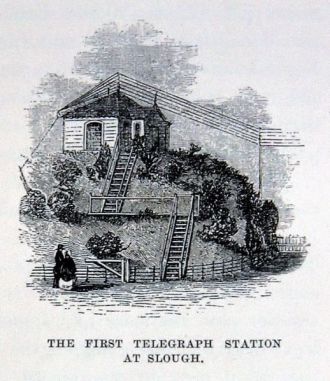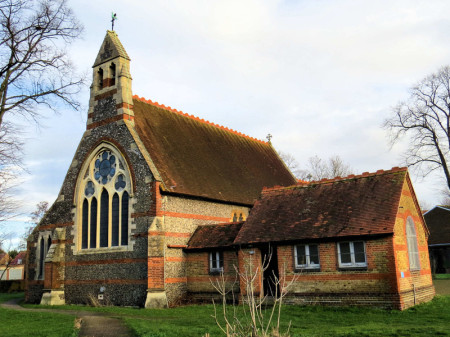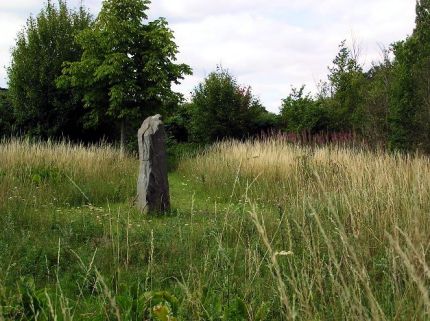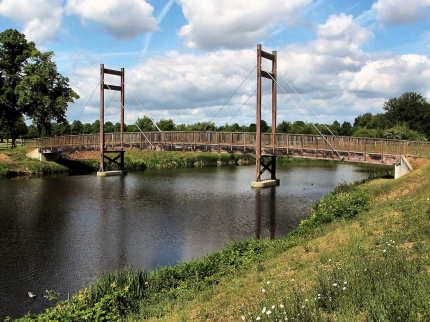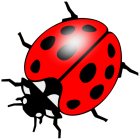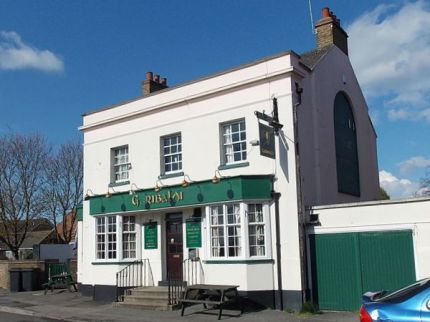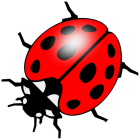
Note: Pages about areas of Slough such as this one are based on historic or accepted common usage rather than the artificial boundaries of the wards as set up by the Local Government Boundary Commission.
Chalvey and Salt Hill
Salt Hill was a distinct village until the establishment of the Trading Estate to the west in the 1920s when Slough expanded to take in the settlement. It is now part of Chalvey Ward.
As with other villages along the Bath Road, Salt Hill was a centre for staging inns. The most famous was the Windmill which attracted several famous visitors such as Pitt the Younger and poet Samuel Taylor Coleridge. In 1814, the Prince Regent hosted a breakfast at the Windmill for the King of Prussia and his sons, the Emperor of Russia, and the Prince of Orange.
Salt Hill Park
Salt Hill Park was funded by local businessman and benefactor James Elliman. He had the land landscaped and donated it to Slough Council in trust for its citizens. It was opened in 1907 and was the first public open space in Slough.
During the Second World War, the iron railings were removed to be melted down ostensibly to provide raw material for the war effort. The true fate of the railings is not known but a similar fate befell the railing of London parks and there is strong speculation that the metal was not suitable for recycling so it was dumped in the Thames Estuary; the whole exercise merely being a propaganda exercise.
Adjacent to the car park accessed from the A4, is the Absolutely Ten Pin bowling alley. There are also sports changing facilities next to the car park. From the centre of the park to the east side are eight tenniscourts, along with a skate/skateboarding park and courts for other ball games. On the other side of the restaurant is the Salt Hill Café.
In the north-west corner is woodland and from here Chalvey Brook emerges from a siphon tunnel to run down the west side of the park, weeping willow prevalent on the west bank.
Maidenhair Tree Ginkgo Biloba
The Maidenhair is the sole survivor of an ancient family and fossils of it have been in coal seams formed 250 million years ago. It was introduced to Europe in the 18th century. Its wood is light, weak and of no commercial value. It’s a deciduous tree; its heart or fan-shaped leaves are green in the summer turning bright yellow before falling in autumn.
The Eton Montem
The Montem Mound, which adjacent to the Slough Ice Arena, is thought to be a Saxon or a Bronze Age burial mound and figured in an old Eton College boy’s ritual known as the Eton Montem. The name Montem comes from mount.
Montem Mound
The event evolved from the 16th century into a march by the boys to the mound every Whit Tuesday and they would collect ‘salt’ or money from passers-by to support the senior scholar of the school. Remember that salt was highly valued in ancient times and used as currency by many civilisations so was probably slang for money. The ceremony changed at some point from annually to once every three years until it was discontinued sometime after 1844.
John Tawell – First criminal to be caught using modern technology
John Tawell (1784–1845) committed a murder in Slough and became the first person to be arrested by the police using telecommunications technology. In 1822 he forged a £10 note from Smith’s Bank. The bank being owned by Quakers appealed for his sentence commuted from the death penalty to transportation to Australia. He later became a successful chemist in Sydney.
By 1831, Tawell and his family returned to London and he employed a nurse, Sarah Lawrence, to look after his wife who had fallen ill. His wife died in 1838. The nurse changed her name to Sarah Hart and Tawell began an affair with her. The couple had two children and Tawell arranged for the three of them to live in a cottage in Salt Hill, Slough.
By 1843 Tawell was having financial problems and decided to get rid of Sarah. On New Year’s Day, 1845, he visited her at the cottage and poisoned her with a treatment for varicose veins that contained hydrogen cyanide. Sometime later Sarah was found dead in her home and a man resembling Tawell had been seen leaving the house.
The police found that a man answering Tawell’s description had booked a ticket on a train to London. They telegraphed Paddington Station requesting his arrest. The Cooke-Wheatstone telegraph of the day had limitations and six letters of the alphabet; C, J, Q, U, X and Z, could not be represented. In the message the letter J was substituted by G and the letter Q by K. The message read:
A murder has gust been committed at Salt Hill and the suspected murderer was seen to take a first class ticket to London by the train which left Slough at 742 pm
He is in the garb of a Kwaker with a great coat on which reaches nearly down to his feet he is in the last compartment of the second class compartment
Tawell was followed to his home by a sergeant of the railway police dressed in a long civilian coat. The murderer was arrested the next day, tried for the murder of Sarah Hart and was hanged in public on 28th March 1845 in Aylesbury.
The two telegraph instruments used in the incident were presented to the Science Museum in London in 1876 by their maker, Reid Brothers, where they have been preserved.
St Peter’s Church
Built in 1860-61, St Peter’s Church is a Grade II* listed building designed by noted Victorian architect GE Street. Details about the church can be accessed by clicking on the button below the photograph.
St Peter’s Church has a war memorial dedicated to the fallen service personnel of the First World War. One of the names is Youens who was posthumously awarded the Victoria Cross. His story is told on the Slough at War/World War One page which can be accessed by clicking on the Poppy symbol to the right.
Chalvey stab-monk
The legend of the stab-monk dates back to at least the mid-19th century. An organ grinder’s monkey bit a finger of a child who had been teasing the animal. The child’s father reacted by stabbing the monkey to death. The villagers, taking pity on the grieving organ grinder, collected money for him to by a new monkey, arrange a funeral for the dead monkey as well as hold a wake with free beer for the mourners.
The ceremony was repeated the following year with a plaster monkey representing the deceased one. A mock funeral was held with a wake and a man fell or was pushed into Chalvey Brook. It became an annual event and the man who fell into the brook was declared ‘Mayor of Chalvey’ for the year. The ceremony became a less regular event. In recent times the stab-monk has only appeared rarely, usually for charitable causes.
Stab-monk Park, off Seymour Road is administered by Chalvey Millennium Green Trust for and on behalf of the people of Chalvey. It was established on land left to the people of Chalvey for education and recreation by Sir Samuel Squire Sprigge (1860-1937).
Chalvey Community Forum
The Chalvey Community Forum is a group of local residents who meet on a regular basis to discuss issues that concern the community of Chalvey and Salt Hill. All members of the community are invited to attend and the meetings are usually attended by a member of Slough Borough Council and a member of the Community Police.
The forum, working with the council, local volunteers and other organisations, help to organise the restoration of local features. Recent and near future examples include the clean up of Salt Hill Stream and Chalvey Brook.
Activities
The forum is always seeking to improve the appearance of Chalvey. To this aim projects include:
-
Community clean-ups
-
Removal and prevention of rubbish
-
Supporting the police in discouraging anti-social behaviour including prostitution and street drinking
-
Organising the annual Chalvey Fête
-
Working with Slough Borough Council and other organisations to achieve a better neighbourhood
The Chalvey Forum website has some very useful local contact E-mail addresses. To learn more about the Chalvey Community Forum, visit their website by clicking on the maidenhair leaf below:
The Maidenhair Leaf symbol belongs to Postcards from Slough and was inspired by the maidenhair tree in Salt Hill Park.
Thames 21
Chalvey Forum has links to Thames 21, an organisation dedicated to improve the environment of the River Thames. Built around a small core of professionals, it attracts local volunteers to maintain the health of their part of the river. It does much more than this by raising awareness of the value of rivers to the public and especially school children through education programs.
In March 2017 Thames 21 organised a refuse pick on the Jubilee River in Slough. Thames 21 provided all the required safety equipment.
Chalvey in the past
Only the Flags has survived intact but it now describes itself as a ‘gentleman’s club’ and charges admission or an annual membership. It offers erotic lap dancers to attract punters.
I am not a prude or a square and I wish success to this business but it does mean that there is nowhere for people of Chalvey to simply go for a drink and a meal perhaps with their family within Chalvey anymore.
Chalvey, like much of Slough, has changed so much especially since the Second World War. One of the most notable changes comes in the loss of three of four public houses, each of which had their own unique character and regulars. The four pubs were:
-
The Cross Keys
-
The Flags
-
The Foresters
-
The Garibaldi
The Flags, Church Street
To be fair the club also offers a widescreen TV for live sports events, along with a games area for pool and darts. There is also an outdoor smoking area.
Pub crawl
A memory from the author
I remember one night years ago when all four pubs still existed, I went out with a mate of mine going on a pub crawl in Chalvey. We visited the four pubs. We had a game of pool in the Flags then went on to, but not necessarily in this order, The Foresters (NE corner of crossroads), the Cross Keys (SE side of Chalvey High Street) and the Garibaldi (N side of the Green).
I think a favoured drink of mine in those days was Guinness and cider and I would appreciate photos of any of these pubs to remind me what they looked like. I can’t be expected to remember those pubs after a night like that now can I!
If you have any photos of any of these pubs please send them to me by clicking on the ladybird below:
The Garibaldi
Situated at 6 The Green, the Garibaldi was reviewed on Yell in March 2015. The reviewer awarded 5 stars and wrote:
‘Lovely community pub, welcoming staff members and regular customers. We went on a Tuesday night where there was a free pool table and everyone was getting involved. Amazing friendly atmosphere, felt like a weekend night out.’
With a review like that the Garibaldi had to be closed as it was at the end of 2016. It was subsequently demolished.
An enquiry from a reader called Jim
Dear Gary,
I was born in Belfast Avenue, Slough in 1943 and my parents moved to Hillside, off Ledgers Road in 1944. I attended the old Chalvey Church of England School next to St Peter’s Church in Church Street from 1947-1952 When Chalvey school closed it was approaching its centenary. I was sent to Montem School and moved onto secondary education in 1954.
As I grew older, I became nostalgic and I enjoy looking at the old photographs of the Slough area found on the internet. So far, I have failed to turn up any pictures of the buildings of old Chalvey School and wondered if you could be of help to me on this issue. I have tried Slough Museum several times over the years but they have not been able to help to now.
Before old Chalvey School closed an exhibition was set up in the school hall and there were pictures in plenty as well as those of previous headmasters and various teachers. On the last day they even made a film of us all walking out two by two, I wonder if that still exists somewhere? These old school buildings were demolished in the very early 1960s and replaced by a ‘shoebox’ of flats!
Yours sincerely,
Jim
G’day Jim
Thank you very much for your interest in my website and for telling me your story which I found most fascinating.
I have to say that your request is a tall order. I often spend hours on the internet looking for old photos of buildings and other things from all around Slough.
The Chalvey School that you refer to is of particular interest to me because I believe that one of its teachers just before the First World War may have been Frederick Youens who was posthumously awarded the VC for his action in the war. I also think it used to hold church services before St Peter’s Church was built and I am searching for it based on this idea.
Kind regards
Gary
Chalvey Primary School
Believed to have been built in 1868 and closed in 1952. It may have been known at different times as Chalvey National Boys and Girls School and Chalvey Infants. A notable teacher was Frederick Youens who was there for a short time just before the outbreak of the First World War. He enlisted with the British Army and was awarded the Victoria Cross for his action near Ypres, Belgium in 1917.
In the last days of Chalvey School, the infant’s part was run by Mrs Palmer and Mrs Danbury. The junior school was run by a succession of teachers including Mrs Cotterill, Mrs Trembath and Miss Davies. There were two Headmasters, Mr Warren and Mr Jones.
To help visualise the area as Chalvey used to be it seemed necessary to create a map. The map is based on a modern map and shows the rough positions of St Peter’s Church, Chalvey School and the local pubs. Click on the map for an enlarged view.
Postcards from Slough is interested in old photographs of Chalvey School, the local pubs, and anything else from Chalvey. If you can help please use my E-mail address garyflint@postcards-from-slough.co.uk or click on the ladybird below and send photos as attachments.
My name is Gary Flint. I'm author, photographer & illustrator for Postcards from Slough. If you wish to make any comments on the contents of the website please click on the ladybird below:
Gary Flint
08/03/1961 - 09/04/2019
Postcards from Slough is an independently funded website. We are open to offers of sponsorship from companies that have any connections to the town. To contact us please click on the ladybird below:
Chalvey Community Forum
Postcards from Slough is linked with a local action group the Chalvey Community Forum. The group liaises with various local organisations in order to improve the quality of life for residents in the ward of Chalvey and Salt Hill. To learn more please click on the maidenhair leaf below:
Museum of Berkshire Aviation
I volunteer as a guide at the Museum of Berkshire Aviation. It is a special museum and if you would like to know more about the museum then please click on the motif below:
To learn more about the museums activities while staying within this website click on the tab at the top of the page or on the motif below:
Graces Guide
Postcards from Slough uses some images from Grace's Guide. Click on the button below:
British Listed Buildings
Postcards from Slough contributes material to British Listed Buildings and uses the site for cross referencing purposes. Click on the button below:
